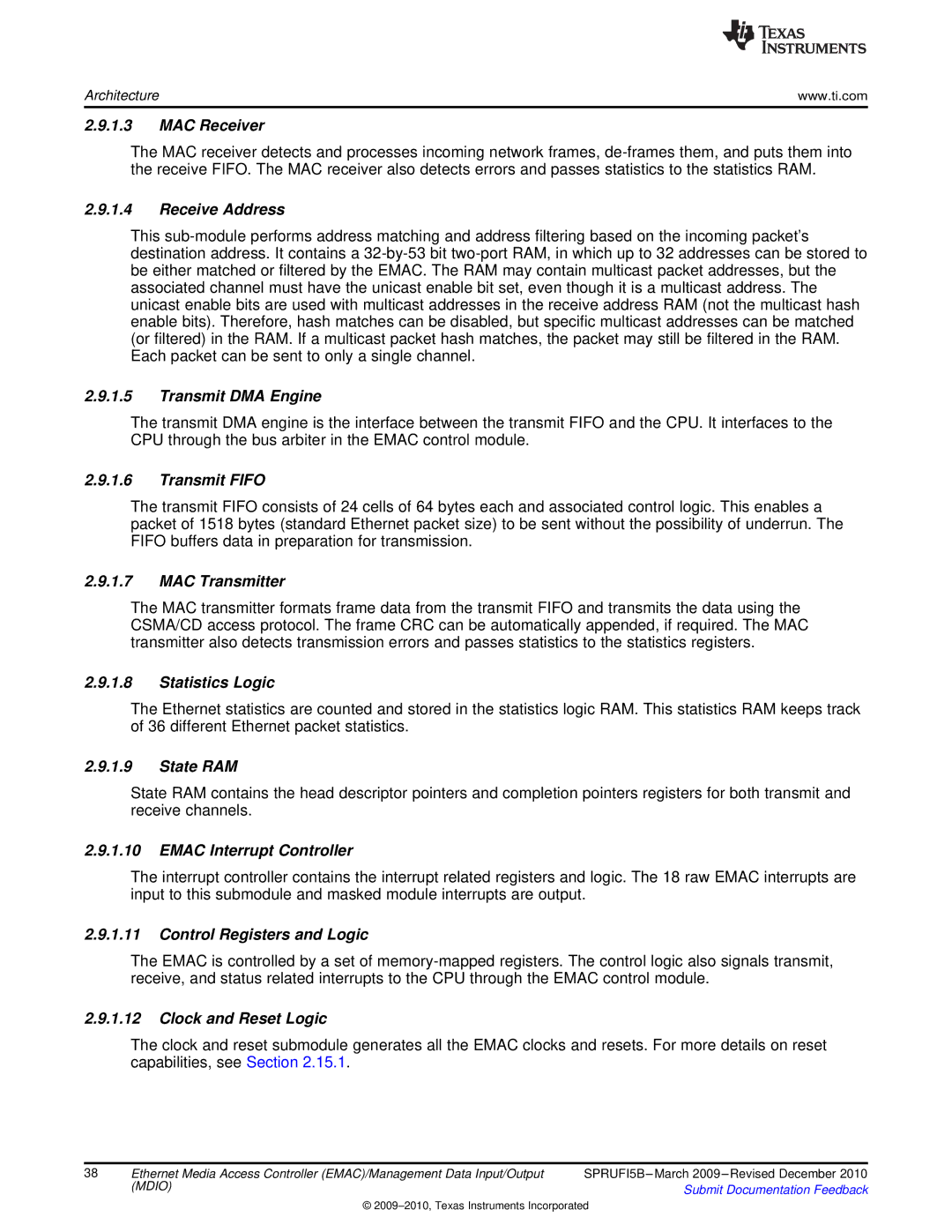
Architecture | www.ti.com |
2.9.1.3MAC Receiver
The MAC receiver detects and processes incoming network frames,
2.9.1.4Receive Address
This
2.9.1.5Transmit DMA Engine
The transmit DMA engine is the interface between the transmit FIFO and the CPU. It interfaces to the CPU through the bus arbiter in the EMAC control module.
2.9.1.6Transmit FIFO
The transmit FIFO consists of 24 cells of 64 bytes each and associated control logic. This enables a packet of 1518 bytes (standard Ethernet packet size) to be sent without the possibility of underrun. The FIFO buffers data in preparation for transmission.
2.9.1.7MAC Transmitter
The MAC transmitter formats frame data from the transmit FIFO and transmits the data using the CSMA/CD access protocol. The frame CRC can be automatically appended, if required. The MAC transmitter also detects transmission errors and passes statistics to the statistics registers.
2.9.1.8Statistics Logic
The Ethernet statistics are counted and stored in the statistics logic RAM. This statistics RAM keeps track of 36 different Ethernet packet statistics.
2.9.1.9State RAM
State RAM contains the head descriptor pointers and completion pointers registers for both transmit and receive channels.
2.9.1.10EMAC Interrupt Controller
The interrupt controller contains the interrupt related registers and logic. The 18 raw EMAC interrupts are input to this submodule and masked module interrupts are output.
2.9.1.11Control Registers and Logic
The EMAC is controlled by a set of
2.9.1.12Clock and Reset Logic
The clock and reset submodule generates all the EMAC clocks and resets. For more details on reset capabilities, see Section 2.15.1.
38 Ethernet Media Access Controller (EMAC)/Management Data Input/Output SPRUFI5B
(MDIO) | Submit Documentation Feedback |
|
©
